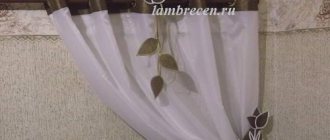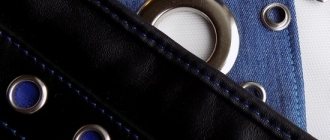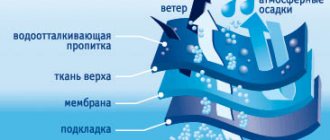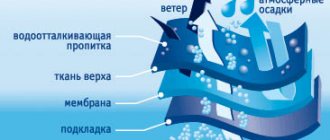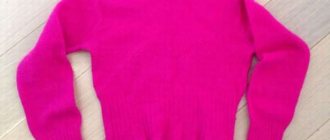Non-format vehicles require a special approach to road safety. When visibility is limited, non-standard parameters of freight transport can provoke an emergency. Contour marking with reflective tape helps to avoid this.
The main material of the self-adhesive film has a high reflectivity, so even in the dark and in bad weather conditions, the marked car remains visible, which significantly reduces the likelihood of an accident.
Note: according to statistics, the risk of road accidents for freight transport with the correct marking with reflective tape is reduced by 45–95% (depending on the category of transport)
Statistics only
Experts note that if a car is driving with low beams, the driver is able to notice a person only at a distance of 25-30 meters. But if a pedestrian has reflective tape on his clothing, then he will be noticeable much further away.
After international research, it turned out that on average a driver is able to react to an obstacle in 2 seconds, and during this time the car will already have time to travel up to 50 m.
Consequently, poor lighting and lack of identification marks on a person can lead to disastrous consequences.
In addition, according to the Russian Federation Traffic Regulations, pedestrians are required to wear reflective elements in cases where they move outside a populated area in the dark. If reflective tapes are absent from clothing, then administrative liability may arise under Art. 12.29. This article establishes a fine of 500 rubles. This rule was introduced on July 1, 2015.
With your own hands
If you can’t buy a sticker, but you still need one, you can create a decal yourself. It's not as difficult as it seems at first glance. And besides, it's quite interesting. You can involve your child in the process. Both he and you will enjoy creating a thermal sticker with your own hands.
- plastic bag with a beautiful pattern;
- parchment paper;
- stationery scissors;
- iron.
- Cut out the picture you like from a plastic bag. This will be the basis of the application.
- We apply the cut piece of polyethylene to the place on the clothing where it will subsequently be glued.
- Cover the polyethylene print with a clean sheet of paper.
- Heat up the iron and press it onto the paper covering.
- We hold the household appliance under pressure for up to 30 seconds, remove the iron, let the paper cool completely and check the quality of the work done.
Wardrobe items decorated with appliqués require special care. By following simple rules, you can maintain the original appearance of your clothes for a long time. Washing items with thermal stickers should be done in water with a maximum temperature of 40°C. Before putting the item in the washing machine, it is recommended to turn it inside out.
It’s not enough to know how to glue an applique onto clothes. The owner of a decorated item, among other things, must have ironing skills. You can only apply the iron to the wrong side of the fabric, avoiding the area with the sticker side if possible. Using a hot iron is also not recommended. It is better to give preference to the average temperature of the metal plate.
Characteristics of reflective tape
Textile tape can be in a variety of colors and has the following advantages:
- high strength;
- durability;
- fire resistance;
- frost resistance;
- the tape is not afraid of ultraviolet radiation and moisture;
- not subject to thermal stress;
- low cost.
However, reflective tapes may have different reflectance rates. Therefore, the higher this indicator, the higher the reflectivity will be.
Despite the fact that the price for such strips averages 50-100 rubles, the quality of such elements is always at its best.
Application
Such tapes are widely used in the manufacture of workwear, for children's backpacks, sports uniforms, etc.
Reflective elements can be of the following width:
For example, 25 mm wide tape is mainly used for vests worn by road workers. This element is also sewn onto the clothing of traffic police officers. Reflective stripes are also often used in the uniforms of medical workers and railway employees. In a word, these tapes are sewn onto the clothes of everyone who, by the nature of their work, works on the street at night.
Reflective inserts are also sewn onto sportswear, children's clothing and backpacks. For such purposes, tapes 50 mm wide are used.
The 12 mm thick tape is used more for decoration than as a means of safety.
Young people most often choose narrow stripes, they are a little less noticeable in the dark, but they also work great.
There is also a special self-adhesive tape. It is very convenient to use as it can be quickly attached and removed. In addition, the tape does not leave any traces on things. You can then re-glue it, but in this case you will have to use glue. Such tapes are most often used in industry, but recently they have also begun to be used by skaters, roller skaters, parkour athletes, and cyclists. The most common ribbon colors are red, white and yellow.
Further tightening of rules
As we have already mentioned, the government has obligated pedestrians who move outside the city at night to wear reflectors. As experts note, this solution is experimental.
In the near future, it is likely that wearing such identification elements will be required within populated areas. By the way, the rule that citizens must wear reflective tape outside cities has been in effect in Belarus for 6 years; this rule also exists in Latvia, Estonia, the USA (in some states), Sweden, Finland and in some other countries.
Drivers' responsibility
After the introduction of the rule dated July 1, 2015, drivers now have a good loophole to avoid (or at least partially reduce) liability in the event of an accident with a pedestrian. After all, if outside a populated area there is a collision with a pedestrian who was not wearing reflective tape, this will be a violation on the part of the victim. Consequently, two parties will be found to be at fault for the accident: the driver and the pedestrian.
Moreover, if the pedestrian remains alive after the accident and is found guilty of the incident, then the driver will even be able to sue the pedestrian and demand compensation for harm (or even moral damages) if the car was damaged in the accident.
Despite the introduction of fines for the absence of reflective tape, lawyers say that in practice it is quite difficult to hold a pedestrian accountable. For example, a pedestrian may not have documents with him, so to draw up a report he will have to go with the offender to the police station. And for the sake of a fine of 500 rubles, traffic police officers are unlikely to bother like that.
It is also worth considering that in order to hold a person accountable under Article 12.29 of the Code of Administrative Offenses, the following signs must be present:
- the pedestrian moves in the dark or in poor visibility conditions;
- he does this outside the populated area;
- when crossing the road or walking along the side of the road;
- absence or poor visibility of reflective tape on clothing for drivers.
Only if all conditions are met can administrative liability arise. It is also worth noting that the concept of “darkness” is quite loose, because the driver’s perception of the road situation depends not only on the lighting, but also on the weather, lighting in the car, and even on the driver’s vision.
In a word, you should not be afraid of a fine; it is better to take care of the presence of reflective elements for reasons of personal safety. Experts recommend wearing reflective tape immediately after sunset, as well as in rainy or foggy weather.
Advantages and disadvantages of this type of reflector
At night, the driver is able to distinguish a pedestrian at a distance of about 30 meters, which is quite short for braking and completely stopping the vehicle. The presence of reflective elements on clothing allows obstacles to be recognized much earlier, which provides more opportunities to maneuver and save lives.
The traffic rules provide for the liability of a pedestrian moving outside a populated area without reflective elements; this may entail a fine of 500 rubles in accordance with Article 12.29 of the Administrative Code.
Among the positive characteristics of reflective tape it is worth noting:
- Strength.
- Long service life.
- Fire resistance.
- Resistance to frost, moisture, heat and ultraviolet radiation.
- Low price.
Possible shortcomings may be associated with dishonesty of manufacturers. The quality of the tapes does not always meet the standard and required standards. The reflectance of tapes can vary greatly; accordingly, a product with a higher indicator should be chosen.
Types of reflective tapes
Reflective stripes can be from 12 mm to 55 mm wide. They are used for workwear, backpacks, and sports uniforms. Before purchasing, you should consider the conditions in which the product will be used. The most common are:
- Textile. They are sewn onto a piece of clothing or accessory. It is best if they are on fluorescent fabric.
- PVC tapes have a high reflectivity, shine brighter in the dark, and are also sewn on.
- Heat transfer adhesive. A hot iron is used in everyday life, and this sticker will last for quite a long time.
- Self-adhesive. Most often they are used on smooth surfaces, for example, on vehicles (bicycles, strollers, scooters), they can be glued to a bag or backpack, and on clothes they do not withstand even one wash.
To select the most suitable tape, you should consider its location.
Types of decals
Before gluing the applique onto the fabric, you need to select it and purchase it from a specialized store that sells sewing supplies. There are several fundamentally different types of thermal application, which differ from each other in the base and material of the design element. The table below lists all existing types of thermal adhesives, indicating their features.
Table - Types of thermal decals
| Type | Peculiarities |
| Flex | — Thermal film; - has a smooth front side |
| Phlox | — Thermal film; - has a velvety “face” |
| Thermal adhesive with increased elasticity | — Stretches well on fabric; - used for silk, guipure, synthetics and other delicate materials |
| With effect | — Shiny surface (glitter); — with 3D drawing; - holographic |
| Reflective | — With special coating; — the “face” of the application shines when exposed to light in the dark |
| Phosphorescent | — Has the ability to accumulate sunlight; - glows at night |
Tips for choosing
If you intend to apply a iron-on adhesive to clothing, but do not know what type of product to prefer, answer a simple question: “What exactly do you want to apply the applique to?” The choice of sticker type depends on the type of fabric on which it will appear in the future.
- Knitwear and items made from fine cotton. To decorate or “save” these elements of your everyday wardrobe, thermal film with a thin base is suitable. It is easy to stick to a cotton base. During use, the applique will shrink and stretch along with the product, without a single hint that it is not “native” to it.
- Jeans, bologna jacket, fabric bag. Thermal films with a thin base are not suitable for thick clothing. The best option for this case would be applications with a thicker base. For example, thermal stickers made of fabric.
- Overalls or child's clothing. In this case, you should give preference to phosphorescent thermal stripes on clothes or applications with reflective elements. At night, these details will attract the attention of others to their wearer, which is especially important for road safety.
- Fashionable wardrobe items. If your goal is to decorate your favorite item, use holographic applications or thermal stickers with a 3D effect. They are suitable for skirts made of leatherette, synthetics, and silk.
How to choose the right tape
Before purchasing a flicker, you should study its characteristics and choose the one with the highest reflection rates. If a mother bought a reflective tape for a child, then it is important to consider where he will wear it - on a jacket, backpack or maybe on a hat.
The most popular are tapes with a thermal transfer function; they do not lose their properties even after 50 washes. This amount is quite enough for the child to take the item. For smooth products, you can buy self-adhesive ones, they are convenient to apply. Sew-on ones are quite problematic to use at home; they are more often used to equip work clothes for workers of various enterprises.
Why do you need a thermal adhesive?
Thermal application is also called thermal patch or thermal sticker. Gluing them is quite simple, because they are covered with a special adhesive layer on the back side. When exposed to high temperatures, it melts and provides adhesion to different surfaces. You can transfer any sticker at home using an iron.
When is it appropriate to install a thermal patch:
- Thermal adhesive will allow you to turn an ordinary item into an exclusive one. Various designs in the form of animals, flowers, symbols will decorate the clothes. Children will like this, because there are applications with cartoon characters, animals and toys, and it will be appropriate on youth casual clothing.
- The sticker will hide small defects that have formed in the most visible place: holes, puffs, stains. This way you can even save a bolonevo jacket, which is indispensable in wet weather and on hikes.
- The thermal patch will strengthen the fabric that is about to tear.
Thermal appliques can imitate hand embroidery or photo printing. Some samples are additionally attached with decorative elements - rhinestones, beads. The fabric for thermal labels is usually flock, satin, satin or velvet. There are also neon stickers that reflect light.
How to apply tape to clothes
Since the best option is thermal transfer tape for clothing, it is worth telling in more detail how to apply it correctly to the product so that it lasts a long time and does not fly off during the first wash. Naturally, a lot depends on the integrity of the manufacturer and the quality of the adhesive base.
What kind of fabric will the tape stick to?
It is worth noting that reflective tape can be applied to any clothing, regardless of the fabric.
Important! Some winter clothing insulation cannot withstand high temperatures, which means that thermal adhesive is not suitable for such products; it is better to use other reflective products.
Placement of tape on garments
In poor visibility conditions, it is necessary to ensure that the headlights of a moving car illuminate the reflective element and attract the driver's attention. Accordingly, the best places will be the chest, back, sleeves and knees. It can be placed horizontally or vertically; it is better if the ribbons follow the silhouette of a person.
Application rules
According to GOST 41.104-2002, contour markings must:
- outline the general shape of the vehicle from the side and rear;
- clearly identify the length and width of the body (at least 80%).
In this case, the bottom line should be located in the interval 0.25–1.5 m above the road (in special cases up to 2.5 m), and the top line should be located as close as possible to the highest point of the vehicle.
Basic application schemes
- There is one continuous line along the entire perimeter of the side and rear surface of the van/semi-trailer/trailer, forming a closed perimeter on each plane, as well as a tape along the entire length of the cab.
- There is a broken line along the entire perimeter of the side and rear surface of the van/semi-trailer/trailer. On the back plane, highlighting with corners of two tapes for all four corners of the surface.
- Solid or dotted tape covering the perimeter of the entire length of the van/trailer/tank and the rear part (in the case of a tank, the rear part is distinguished by a closed dotted line along the perimeter).


